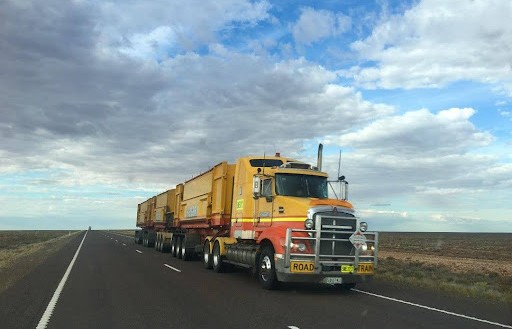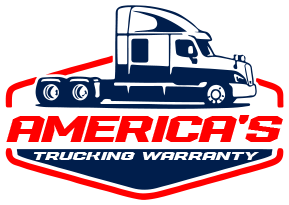How To Use Load Boards: A Trucker's Guide To Finding Freight and Getting Paid

The message board has always been a primary method for people with aligned interests to communicate. What originally started as posting flyers with tear-away phone numbers on a supermarket bulletin board eventually moved online. For shippers and truckers, this online incarnation became the load board. It allows both groups to connect and move freight where it needs to go.
What Are Load Boards?
Load boards are online marketplaces where shippers and freight brokers can find truckers to move their products, and truckers can find loads to transport. Also called freight boards or truck boards, load boards make the process of moving goods more efficient for everyone involved.
Truckers can find work and fill empty cargo space, and shippers can quickly find someone to transport their loads, often combining loads with other shippers to decrease costs.
How Do Load Boards Work?
Load boards are hosted online. You log on through your user portal and either search for or post a load. Each listing will contain the essential information you need to know about finding truck loads, such as the pickup and delivery location, the load weight and dimensions, the freight type, and payment amount.
Who Uses Load Boards?
Many different stakeholders use load boards, including fleet owners, owner-operators, carriers, shippers, and freight brokers. Each group will use the load board slightly differently to achieve their goals.
Load Boards for Shippers
Shippers use load boards to find carriers for their freight and to check market rates for shipping. They can either post their loads directly or search for trucks and reach out to carriers directly. Shippers can also use load boards for market research to set freight rates.
Load Boards for Truckers
You can use trucking load board services to find work, build relationships, and maximize your profits. If you’re dropping off a load in one area, you can find another to pick up on your way back. This allows you to minimize empty miles and make the most of your time on the road.
You can also use load boards to connect with shippers and build long-term relationships. Load boards can be an important part of your long-term strategy to expand your business.
The Role of Trucking Brokers
Freight brokers use load boards in much the same way shippers do. They take on the administrative work of finding carriers for shippers. Freight brokers act as intermediaries by negotiating rates, managing logistics, tracking shipments, and handling paperwork. They frequently leverage load boards to find the best rates for their clients.
What Types of Load Boards Are There?
You can choose from several types of load boards, and the best option for you will depend on factors such as your earnings goals, your truck type, and your other reasons for using it.
Free
Free load boards for truckers don’t charge carriers a fee. They may also be free for shippers, or they may charge a fee when loads are booked. Some free load board hosts generate an income from selling ads, while others host boards as a service for their trucking clients. While the price point is an obvious advantage, these boards usually only have basic features. Free load boards have almost no barrier to use, so you need to be on the lookout for scams.
Paid
Paid load boards usually charge a monthly fee, ranging from $35 to $150. These boards offer more tools and functionality, and some are more exclusive about load listings. They frequently have advanced search options and additional features such as data analytics, reporting, live bidding, and accounting and invoicing. These tools can help you make the most of load boards by providing data for bidding and rate negotiations and simplifying your billing process.
General
General load boards can be free or paid and include the majority of load boards. They include typical types of freight that can be carried with standard equipment, such as traditional, dry van loads.
Specialized
Specialized load boards focus on niche freight that may require specific equipment, such as livestock or hazardous materials. One type of specialized load board is an LTL (less than truckload) board. Loads that aren’t large enough to fill a trailer are considered LTL and can be combined with other loads for more efficient shipping.
Popular Load Boards
The following are some of the best load boards for truckers:
- DAT: Heavy on data and analytics, DAT is one of the most widely used owner-operator load boards and offers a lot of features. However, the cheapest plan starts at $49/month.
- DirectFreight: With a streamlined design, DirectFreight is easy to use and has many features, such as real-time notifications. It may be too simplistic for truckers who are interested in advanced data analytics.
- Trucker Path: The plans on Trucker Path range from free to $69/month, making it one of the most affordable load boards. However, the free plan doesn’t include advanced functions and data analytics.
Common Features of Load Boards
Not all load boards are the same, but most include the following features:
- Load posts: Shippers and freight brokers post loads for carriers to bid on. They include relevant details so you can offer an informed bid, such as dates for pickup and drop-off, locations, weight, dimensions, and necessary van type.
- Search functionality: The ability to search for specific loads is what makes load boards so valuable. You can search based on location if you’re looking for return-haul loads or for dimensions if you’re trying to fill up some empty space in your trailer. On most boards, you can filter loads based on data, pickup or drop-off points, weight, trailer type, or preferred lanes.
- Shipper information: Some load boards let you see information about shippers, such as their credit score or days to pay. This data can be valuable when you're working with a new broker or shipper.
- Truck search: Shippers and brokers can also use search functions to find carriers. They can reach out to them directly instead of posting a load.
- Mileage and route data: Advanced load boards can automatically generate mileage data and find the optimal route for you. They can also provide data on fuel costs, lane conditions and activity, rates, and load ratios.
- Integration with software tools: Some load boards integrate with software tools such as transportation management systems (TMS) and freight factoring. This allows brokers and shippers to take advantage of features such as posting the same load to multiple boards simultaneously or carriers to get paid faster.
- Direct booking: Some load boards offer direct booking, so you can submit a bid or book a load from within the load board. However, others only provide a phone number, and you’ll have to call the shipper or broker to book.
Benefits of Using Load Boards
Load boards offer carriers many benefits, including:
- Growing your business: Whether you’re just getting started or want to expand into new lanes or freight types, load boards allow you to quickly find new business. They also offer you a way to connect with shippers or brokers to build a relationship. Once you have an established relationship with a shipper, you can often work with them directly, without needing to go through a load board. This can help you build a bigger book of business and stay busy.
- Reducing empty miles: When your truck is empty, you’re losing money. Load boards can help you pick up a load on your route home after you’ve dropped one off so you can avoid hauling an empty trailer.
- Maximizing load efficiency: Load boards can also help you fill up your truck if you’re hauling less than a truckload. You can make extra money on the otherwise unused space in your trailer.
- Negotiating better rates: Load boards allow you to see the going rates for different types of loads. You can use this information as the basis of setting and negotiating rates to make sure you aren’t underbidding for jobs.
Load Board Tips
You’ll get the most value from a load board if you take a strategic approach to using it.
Leverage Data
Take advantage of the data many load boards provide, particularly paid ones. You can use data to optimize almost all aspects of your operations, including filling empty trailer space, finding return loads, and optimizing your routes to save time and money. This data can help you evaluate the revenue you generate on each load so you can make the most profitable decision.
Evaluating Loads
Evaluate each load based on factors such as the type of cargo, the transportation distance, the route, the payment terms, and the shipper or broker’s reputation. You should also consider whether the load works with your equipment and schedule.
Building Relationships With Shippers
Although you can use freight load boards to find one-off loads, they’re often most valuable when you use them to build your book of business. Working directly with shippers often allows you to charge higher rates because you’re avoiding the costs associated with using a broker.
How To Use Load Boards To Avoid Common Pitfalls
The most important thing to keep in mind when using truck load boards is to do your research. Make sure you understand what type of load board you’re using and what features it offers. You should also understand all of your potential expenses so you can make a competitive bid without losing money. Finally, you’ll want to research the shipper or broker to guarantee they’re trustworthy and have a record of paying on time.
Maximize Your Efficiency With Load Boards
When you’re running a trucking business, whether you’re an owner-operator or scheduling a fleet of trucks for others, you need to optimize every load to increase your profitability. Load boards allow you to find new business, avoid empty miles, and fill your trailer to capacity. You’ll get the most out of load boards by understanding their strengths and weaknesses and using available data to make competitive bids.
Protecting your truck against unexpected repair expenses is also critical to running a profitable business. America’s Trucking Warranty protects you from the inevitable expenses by covering all of your essential mechanical components. Reach out today for a free quote.
Checklist for Using Load Boards Effectively
- Choose the right type of load board (free if you’re just starting out, paid if you need robust data analytics)
- Understand how to use the features of the board you choose
- Keep your contact information updated so shippers and brokers can reach out directly
- Research shippers and brokers to avoid getting stuck with an unpaid invoice
- Use data to determine expected revenue before you bid
- Analyze your results for different boards to determine if they’re worth the subscription costs
- Use load boards to build long-term relationships
